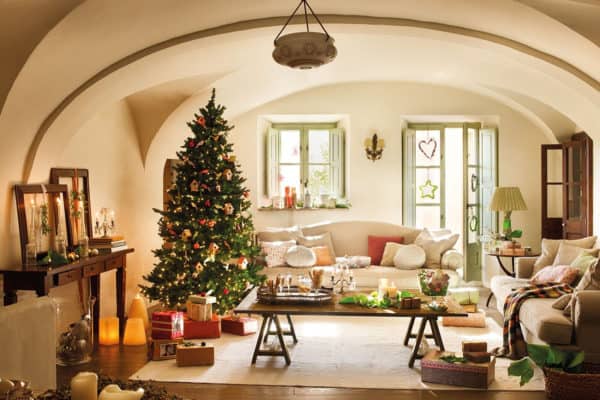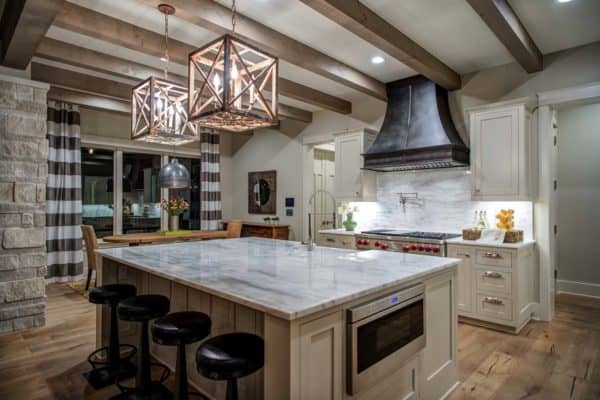
Designed and built by GreenSpur, this off grid cabin retreat provides a compact family getaway that is all about unplugging from technology and being one with nature. The cabin is located in Delaplane, Virginia, approximately 50 miles due west of Washington, D.C. Nestled on a 50-acre property along the coveted Appalachian Trail, the retreat offers unparalleled views of Virginia’s Wine Country.
Called “The Lost Whiskey Project”, the goal is “all about exploring our personal limits of slowing down and simplifying,” explains GreenSpur. “It’s about the value of time and experiences over information and accumulation.” This 160-square-foot concrete structure is one part Scandinavian minimalism and two part Virginia countryside.

With a crackling fire that heats the hot tub, solar panels, cisterns, Murphy bed, shower and compost toilet this off-grid structure is virtually maintenance free and should look and function the same 100 years from now. But, the secret ingredient is the escape; the trees, a warm blanket, a good book, hopefully a good drink and with any luck a good conversation with a friend or family member.

It’s meant to bring out the best versions of ourselves. Who we are after some quality time on the mountain, away from technology – if only for a few days. This project is about rediscovering the lost art of gathering, shelter and nature.

Interesting Facts: This flat-packed concrete tilt-up structure was prebuilt in the GreenSpur warehouse and features several technologies. The structure runs principally on a 12-volt system, modeled after a sailboat’s electronics. A deep overhang above the south-facing windows shelters the home during the summer months, while allowing the sun to shine during the winter. Earth tubes run under the slab to feed below-grade air into the living quarters. The mass of concrete helps keep the cabin cool, as does the roof, which is constructed of structural insulated panels (SIPs) with 10 1/2-in.-thick EPS foam.

Above: During the winter, a small wood-fired stove keeps this compact footprint warm. After the concrete heats up, the interior is t-shirt wearing comfortable, however it is recommended to wear slippers on the slab floor — a concrete deck poured on composite panels, set on two LiteSteel beams.

What We Love: This off grid cabin retreat provides a welcoming respite to get away from mindless consumption, unplug your electronics and enjoy the beauty of nature and those around you. Despite its compact size, there is a feeling of spaciousness with the vast landscape surrounding this home. The indoor-outdoor connection offers a feeling of tranquility, this cabin offers everything one could need — except for internet — well almost everything!
Tell Us: What do you think, could you live in this compact off-grid cabin? Do you think you could unplug for a couple of days or a week? Let us know your thoughts in the Comments below!
Note: Check out a couple of our most popular off-the-grid tours that we have featured here on One Kindesign: Tour this amazing “off the grid” New York cabin in the woods and Off-grid residence designed for book lovers on the Gulf Islands.

Above: Rainwater is harvested in a cistern, which is composed of a 2 ft. by x 10 ft. culvert pipe tipped on its end. The cantilevered deck features a Dutch tub, which is essentially a horse water trough that gets heated by the fire pit. The fire heats a coil wrapped around the interior of the fire pit, which is connected to 1-1/2 inch copper lines (one high and one low) from the tub. It takes about three hours for the tub to get steaming hot.



The cabin is perched on a rocky outcropping, with a cantilevered deck. The roof is made from concrete-skinned structural insulated panels (SIPs).

Above: The Murphy bed is composed of reclaimed wood and doubles as a dining table when not in use (seats up to six guests). This compact cabin includes a shower, composting toilet, propane cooktop, concrete sink with battery storage underneath, and a hammock suspended over the cliff side for gazing over the rolling fields (integrated into the deck structure).

Above: At night, the deck is illuminated by LED lights.
Photos: Mitch Allen Photo










0 comments